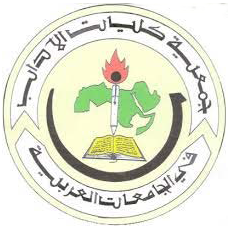Association of Arab Universities Journal for Arts مجلة اتحاد الجامعات العربية للآداب

Document Type
Article
Abstract
Describing modern Hebrew literature's portrayal of Palestinian colonization as a "return of the absent," despite the evident flaws in this understanding, and deeming it a necessary element of life and civilization that non-Jewish people had to embrace, reveals a colonial awareness that gave rise to a movement. This movement, propagated by a colonial mindset, established a theory supported by all colonial forces, upon which a state was built, and a society was founded that remains unparalleled to this day, despite eight decades have passed since its inception. Arabic literature, on the other hand, depicts the tragedy of Palestine as a sorrowful narrative in Palestinian, Arab, and human imagination. This portrayal has recurrently depicted its painful scenes from the beginning of the past century to the present day, as escalations persist. These portrayals are reflected in works that contradict the collective Zionist consciousness. On the other
hand, Zionist works strongly antagonize Arabs for multiple purposes. First, it was for consolidating Zionist energies under a single banner. Second, it was for undermining the determination of the opposition under the influence of European and American propaganda and support. This was achieved through operations aided by a joint European-American media apparatus. These efforts had a detrimental impact on the Arab narrative, portraying it as feeble and weak, in contrast to the fortified and supported Hebrew narrative, which completely rejects any existence beyond itself. The mechanism of colonial support for this colonization did not halt, and the ongoing occupation and expansion of the boundaries of annexation did not stop at the inception of invasion projects. These projects were described by Zionists s as fertile land, admired for its nature, where they would establish civilizational projects to serve them. Moreover, they went even further by proclaiming it as their land from that day forward without dispute, asserting that its rightful owners have no claim and are unworthy of it. The enemy army's leaders forgot about its impoverished inhabitants and the children clutching the hems of their mothers' garments, concealing themselves and casting sharp glares of hatred at the soldiers, their sworn adversaries. These children engraved the soldiers’ images and forms into their memories as they held their weapons, as described by the writer. The writer predicts, through the voice of one of the soldiers, that these children will one day pursue their enemies to reclaim what they have lost. Cargo trucks arrived to carry the survivors from the killings in "Khurbet Khizaa," relocating them from their gathering place to where deportation orders are enforced. Combat vehicles carried soldiers with their weapons, patrolling the village and its surroundings, chasing the defenseless citizens who fled the one-sided battle. This led the fighters to gaze in astonishment at the locals, realizing that they do not wield arms, do not engage in combat with their enemies, and only know how to flee. This statement proved true for an unarmed people who were under the protection of the United Nations and under British mandate. This novel is a depiction that has been repeated throughout the entirety of the Palestinian occupation, as if it were replayed through the numerous confrontations of the Palestinian and Arab people in Palestine and other Arab countries against the occupying forces, as they pursued their expansionist projects. When the narrator wrote this novel, the occupying forces had not yet progressed beyond occupying a fifth of Palestinian land. How much more striking is it today, as Palestine is entirely occupied, and Israel remains a source of aggression to this day.
Recommended Citation
Alazzam, Taisier H.M
(2023)
"The Trends of Zionist Literature in the Middle of the Twentieth Century The Novel " ,חרבת חזעהKhirbet Khuzah": Smelinsky Blooms as a Model,"
Association of Arab Universities Journal for Arts مجلة اتحاد الجامعات العربية للآداب: Vol. 20:
Iss.
1, Article 2.
Available at:
https://digitalcommons.aaru.edu.jo/aauja/vol20/iss1/2

